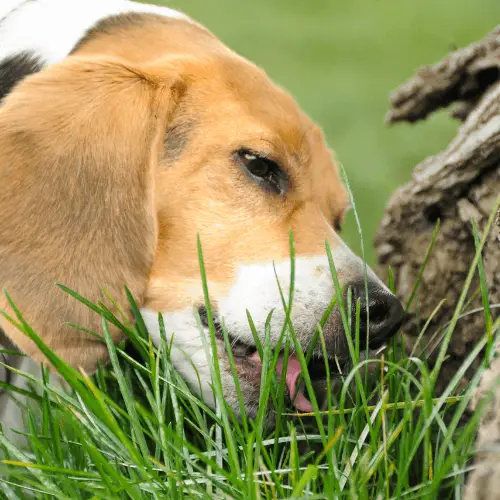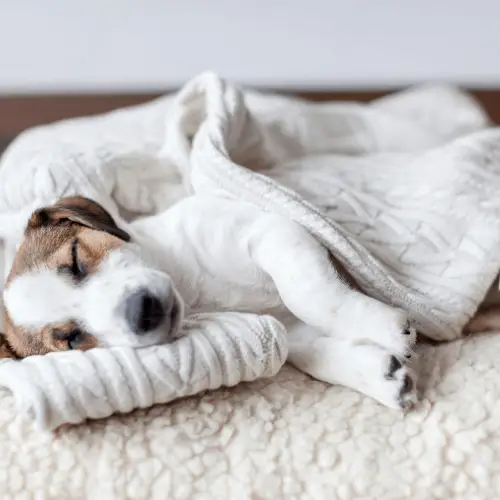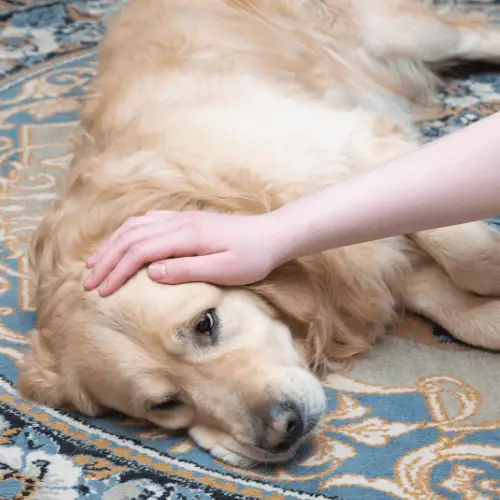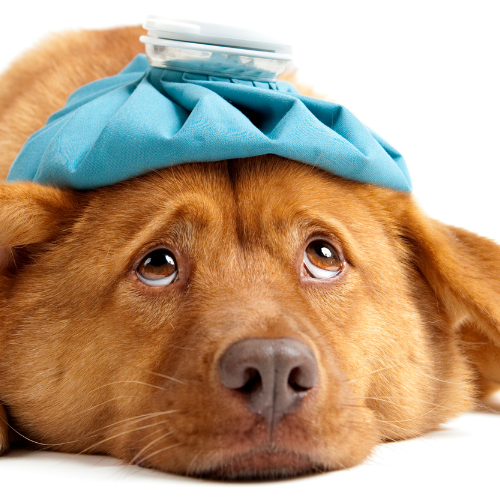As a dog owner, one of the most concerning health issues I’ve come across is canine parvovirus, a highly contagious and potentially fatal viral disease that primarily affects young and unvaccinated dogs. This virus emerged in the late 1970s and quickly spread worldwide, causing severe gastrointestinal illness in puppies and even affecting wild canines and other animals.
Parvo is transmitted through direct contact with an infected dog or by indirect contact with contaminated objects, such as feces, surfaces, food and water bowls, and even clothing. The virus is resistant to various environmental conditions, making it difficult to eradicate and easy to spread.
The impact of parvo on dogs can be devastating, especially for puppies, as it weakens their immune system and makes them more susceptible to secondary infections. Recognizing the early signs of parvo and seeking prompt veterinary care can significantly increase a dog’s chances of recovery. In this article, we’ll explore the first signs of parvo in a dog, how to prevent it, and what to do if your dog is infected.
Transmission and Contagion

Parvo is a highly contagious virus that primarily affects young and unvaccinated dogs. It spreads through direct contact with an infected dog or indirect contact with contaminated objects, such as feces, surfaces, food and water bowls, and even clothing. The virus can also contaminate kennel surfaces, collars, leashes, and the hands and clothing of people who handle infected dogs.
Parvo Transmission and Contagion
| Transmission Method | Description |
|---|---|
| Direct contact | Dogs can contract parvo through direct interaction with an infected dog or its feces. |
| Indirect contact | Parvo can spread through contact with contaminated objects, such as toys, bowls, and other items exposed to the virus. |
| Environmental persistence | The virus is resistant to heat, cold, humidity, and drying, allowing it to survive in the environment for long periods, sometimes up to a year. |
To minimize the spread of parvo, it’s essential to practice good hygiene, vaccinate your dog, and isolate infected dogs. Proper cleaning and disinfection of contaminated areas are crucial for controlling the spread of the virus.
Early Signs of Parvo

As a dog owner, it’s crucial to be aware of the first signs and symptoms of parvo in dogs and puppies. Early detection can significantly improve the chances of recovery. The initial symptoms of parvo typically include:
Early Signs of Parvo in Dogs
| Symptom | Description |
|---|---|
| Lethargy | An infected dog may show signs of tiredness and weakness as the initial symptom. |
| Loss of appetite | Affected dogs may lose interest in food and refuse to eat. |
| Fever | Infected dogs may develop a fever, indicating their body is fighting the virus. |
| Vomiting | As the virus progresses, dogs may experience vomiting, which can be severe. |
| Diarrhea | Parvo often causes severe diarrhea, which may be bloody and have a foul smell. |
| Abdominal pain | Dogs with parvo may show signs of discomfort and pain in their abdomen. |
| Dehydration | Due to vomiting and diarrhea, affected dogs can become dehydrated quickly. |
| Weight loss | Infected dogs may lose weight rapidly as a result of the illness. |
| Weakness | As the disease progresses, dogs may become weak and have difficulty moving. |
If your dog or puppy shows any of these signs, it’s essential to contact your veterinarian immediately. Early intervention and treatment can make a significant difference in the outcome for your pet.
Diagnosis and Detection
Detecting parvo in dogs early is crucial for successful treatment and recovery. Veterinarians use various diagnostic methods to identify parvo in dogs, including:
- Fecal testing: This test checks for the presence of the parvovirus in a dog’s feces. It is a common method for diagnosing parvo and can provide quick results.
- Polymerase chain reaction (PCR) testing: This test detects small pieces of viral DNA specific to parvovirus in a dog’s stool. PCR testing is highly accurate and can confirm a parvo diagnosis.
- Blood tests: A simple measure of white blood cell count can be suggestive of a parvo infection, as the virus often infects the bone marrow, leading to a low white blood cell count.
The importance of early detection cannot be overstated. Most deaths from parvo occur within 48 to 72 hours following the onset of clinical signs. If your dog or puppy shows any signs of parvo, such as lethargy, loss of appetite, vomiting, diarrhea, or fever, contact your veterinarian immediately. Prompt diagnosis and treatment can significantly improve the chances of recovery for your pet.

Treatment and Recovery
When it comes to treating parvo in dogs, the primary focus is on supportive care to alleviate symptoms, control dehydration, and prevent secondary infections. The treatment options for parvo include:
- Intravenous (IV) fluids: Correcting dehydration and electrolyte imbalances is crucial. This requires the administration of intravenous fluids containing electrolytes.
- Antibiotics: Since the virus weakens the immune system, antibiotics are given to prevent secondary bacterial infections.
- Anti-nausea medications: To improve patient comfort and reduce vomiting, anti-nausea medications are administered as injections.
- Pain management: Medications may be given to alleviate abdominal pain and discomfort associated with parvo.
- Nutritional support: Providing proper nutrition is essential for recovery. In some cases, a feeding tube may be necessary.
The recovery process for dogs affected by parvo can be challenging and requires close monitoring. Ideally, dogs should be hospitalized to receive the necessary care and attention. However, in situations where hospitalization is not possible, outpatient therapy can be successful if the owner can administer medications and adhere to a rigorous schedule of daily checks with their veterinarian.
The prognosis for dogs with parvo varies, but most dogs recover if aggressive treatment is used, and therapy is started before severe septicemia and dehydration occur. It’s important to remember that early detection and prompt treatment are crucial for improving the chances of recovery for your pet.
Prevention and Vaccination
Protecting your dog from parvo is essential, and vaccination is the most effective way to prevent the disease. Here’s a typical vaccination schedule and other preventive measures to protect your dog from parvo:

Parvo Prevention and Vaccination
| Prevention Method | Description |
|---|---|
| Vaccination schedule | Puppies should receive their first parvo vaccine at 6-8 weeks of age, followed by boosters at 10-12 weeks and 14-16 weeks. A booster shot is administered one year later and every three years after that. Adult dogs should receive boosters every year. |
| Limit exposure | Until your puppy has received all their parvo vaccines, limit their exposure to other dogs and public places where unvaccinated dogs may have been. |
| Hygiene | Practice good hygiene by washing your hands, cleaning your dog’s toys, bowls, and bedding regularly, and avoiding contact with dogs that may be infected. |
| Disinfect | If you suspect your dog has been exposed to parvo, disinfect your home and yard using a bleach solution to kill the virus. |
By following these preventive measures and adhering to the recommended vaccination schedule, you can significantly reduce the risk of your dog contracting parvo and ensure they remain healthy and happy.
Parvo in Different Dog Breeds and Ages
While parvo can affect dogs of any breed and age, certain age groups and breeds may be more susceptible to the virus. Here’s a closer look at the vulnerability of different dog breeds and ages to parvo:
- Age: Puppies between the ages of six weeks and six months are most vulnerable to parvo. Puppies younger than six weeks old still retain some of their mother’s antibodies, assuming the mother received her full series of parvo vaccinations. Puppies are vaccinated against parvo at approximately 6, 8, and 12 weeks of age, but they remain vulnerable until they have received all three shots in their vaccination series.
- Breeds: While all breeds of dogs can be affected by parvo, some breeds may be more susceptible to the virus. For example, German Shepherds have been reported to be more prone to parvo infection.
To protect your dog from parvo, it’s essential to follow the recommended vaccination schedule and take extra precautions during the vulnerable period, especially for puppies and breeds with a higher risk of infection.
Parvo’s Impact on Multi-Dog Households
Preventing the spread of parvo in households with multiple dogs is essential to ensure the health and well-being of all your pets. Here are some steps you can take to minimize the risk of parvo transmission in a multi-dog household:
- Vaccination: Ensure all your dogs are up-to-date on their parvo vaccinations, following the recommended schedule provided by your veterinarian.
- Isolation: If one of your dogs is diagnosed with parvo, isolate the infected dog from the rest of the household to minimize the risk of transmission.
- Hygiene: Practice good hygiene by washing your hands frequently, especially after handling an infected dog or cleaning up after them.
- Cleaning and disinfection: Regularly clean and disinfect your home, paying special attention to areas where your dogs spend time, such as their sleeping areas, food and water bowls, and toys.
- Limit exposure: Until all your dogs are fully vaccinated, limit their exposure to other dogs and public places where unvaccinated dogs may have been.
- Monitor health: Keep a close eye on the health of all your dogs, and contact your veterinarian immediately if you notice any signs of parvo or other illnesses.
By following these preventive measures, you can help protect your dogs from parvo and maintain a healthy, happy multi-dog household.
Cleaning and Disinfecting After a Parvo Outbreak
Properly cleaning and disinfecting your home and yard after a parvo outbreak is essential to minimize the risk of future infections. Here are some guidelines for effectively cleaning and disinfecting the environment after a parvo outbreak:
- Remove organic material: Start by removing any feces, vomit, and other organic materials from the affected areas.
- Clean surfaces: Thoroughly clean all surfaces, including floors, walls, and furniture, using soap and water to remove dirt and debris.
- Disinfect with bleach: Parvovirus can be inactivated by bleach. Prepare a solution of one part bleach to 30 parts water and use it to disinfect all surfaces, including bedding, toys, food and water bowls, and any other objects your dog has come into contact with.
- Clean outdoor areas: Disinfect your yard and outdoor areas where your dog has been, paying special attention to areas where feces and vomit were present.
- Wash clothing and bedding: Launder any clothing, bedding, and towels that may have come into contact with the infected dog using hot water and detergent, followed by a bleach solution if possible.
- Personal hygiene: Wash your hands thoroughly after handling any contaminated items or cleaning affected areas.
By following these guidelines, you can help reduce the risk of parvo transmission and create a safer environment for your dogs. Keep in mind that while these steps can significantly decrease the presence of the virus, it may not be possible to completely eliminate parvo from your home.
Conclusion
The importance of early detection, treatment, and prevention of parvo in dogs cannot be overstated. Recognizing the first signs of parvo, such as lethargy, loss of appetite, vomiting, diarrhea, and fever, is crucial for seeking prompt veterinary care and increasing your dog’s chances of recovery. Adhering to the recommended vaccination schedule and practicing good hygiene can help protect your dog from this highly contagious and potentially fatal disease.
In multi-dog households, taking extra precautions to prevent the spread of parvo is essential. This includes isolating infected dogs, disinfecting the environment, and monitoring the health of all your pets. By following these guidelines, you can help ensure the well-being of your furry friends and prevent the devastating effects of parvo in your household.
Frequently Asked Questions
What are the first signs of parvo in a dog?
The first signs of parvo in a dog usually include lethargy, loss of appetite, and vomiting.
How can I tell if my dog has parvo?
If you suspect your dog has parvo, you should take your dog to the vet immediately. The vet will perform tests to confirm the diagnosis.
Can puppies get parvo?
Yes, parvo is most commonly seen in young puppies, especially those under six months of age.
How does parvo spread?
Parvo is spread through contact with infected feces. Dogs can contract the virus by sniffing or licking contaminated surfaces.
What are the symptoms of parvo in puppies?
The symptoms of parvo in puppies include vomiting, diarrhea (often bloody), lethargy, loss of appetite, and dehydration.
What should I do if I suspect my dog has parvo?
If you suspect your dog has parvo, you should take your dog to the vet immediately for diagnosis and treatment.
Can parvo be prevented?
Parvo is preventable through vaccination. Make sure to get your dog vaccinated to protect them from the virus.
Can dogs of all ages get parvo?
Yes, dogs of all ages can get parvo, but it is most commonly seen in younger puppies.
What are the warning signs of parvo?
The warning signs of parvo include lethargy, loss of appetite, vomiting, diarrhea (often bloody), and dehydration.
How can I keep my puppy safe from parvo?
To keep your puppy safe from parvo, make sure to get them vaccinated, avoid exposing them to areas frequented by infected dogs, and keep them away from other dogs showing signs of illness.
Hi, I’m John and I love dogs. Ever since I was a kid, I always wanted to have a furry friend by my side. I grew up with a golden retriever named Max, who taught me a lot about loyalty, friendship, and fun. He was my best buddy for 12 years, and I miss him every day.
